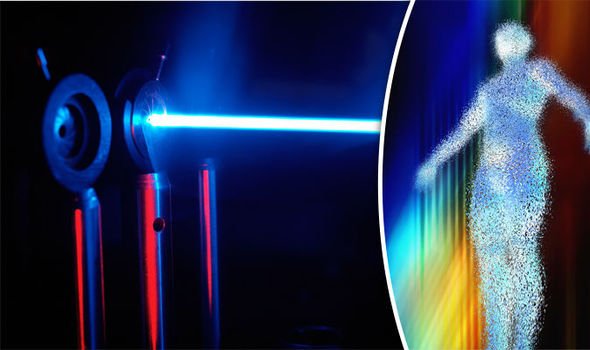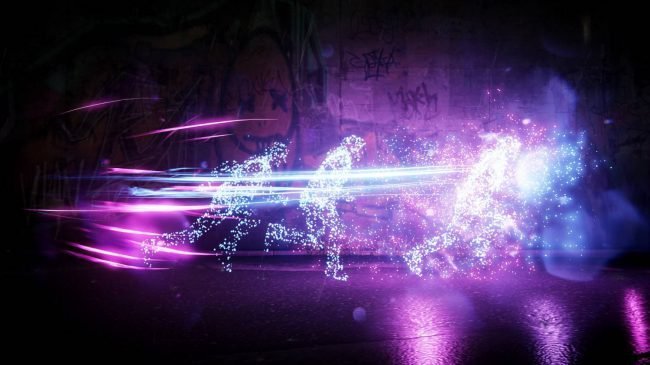
Star Trek has a lot to answer for. Popular imagination the idea of teleportation, in which we step into a giant scanner of some sort and instantaneously find ourselves somewhere else, mind, body, and soul intact (Hopfully not in a bloody mess on the floar or being combind with a bug that was in the teleporter with us at the time).
Theoretically, there are really only two ways this can(’t) be done – physical deconstruction at x and reconstitution at y, or the translation of one’s person into data to be transmitted, then reconverted into matter, like some organic fax machine.
Impossible? In 1993 an international group of six scientists, showed that perfect teleportation is possible in principle, or at least not against the laws of physics. More recently scientists both in the US and China have been trying. Just last year, Chinese scientists were able to “teleport” photons to a satellite 300 miles away, using a phenomenon called “quantum entanglement”. Simply put this is where a pair of photons are able to simultaneously share the same state, even when separated by vast distances. Change the state of one particle, and weirdly, the other changes too, with no detectable connection. (which can be used in FTL communication as this is a thing in my world,)
Scientists are just beginning to suss out how to use the phenomenon to transfer information between the two entangled particles. They have found that a third particle can be used to entangle one of the original particles and manipulate the state of the distant particle.
This will have huge implications for a new “quantum internet” – faster, more powerful, unhackable. However, you might not be too surprised to learn that science is some way away from beaming us into the office.
We are still working out how to teleport photons. Assuming somehow we discovered how to teleport atoms, then molecules the amount of bits to record and transmit is unthinkable. Even an e-coli bacterium contains 9×10 to the power 10 atoms (900,000,000,000 or nine hundred billion Atoms, if my maths is correct if not please tell me in the comments); you are made of about 32 trillion.

According to a highly entertaining University of Leicester study into the computing power required to teleport a human being, your cells, broken down into data, equates around 2.6 x 1042 bits, which is 2.6 followed by 42 zeroes.
You would require stupendous bandwidth and roughly 10tn gigawatt hours of power. Teleporting one human being would therefore require hogging the entire UK power supply for more than a million years and take some 4.8 million million years to transfer – or about 350,000 times longer than the universe has existed. It would literally be quicker to walk.
And after such a long wait, you might not even survive the transfer. Even our top 3D printers, materials and scanners are unable to faithfully reproduce a cowpat, much less a human with their neurons, memories, thoughts or personality.
Even then, would you not be transmitting a copy? What happens to the you at point x when you at point y appears? Will original you be zapped? If so, who in their right mind would test this wondrous machine?
Yet Kaku thinks these problems are solvable – and that human teleportation may be possible within 100 or so years. He envisages a teleporter that works like an ultra high-res MRI scanner, with accuracy at the single-atom-per-pixel level.

To transmit this data, Kaku proposes using x-rays, which have super-short wavelengths and high frequencies that carry 1m times more data than normal optical fibre. Your data would be encrypted and beamed into space, bounced around a satellite network and then beamed to a quantum computer on the other side of the world to unpack. Kaku neglects to say what we would do with the original you, leaving the problem to others, but goes so far as to predict the transport of a simple molecule in the next 10 years, soon to be followed by DNA.
So much for data and atom smashing. Why not forget disintegration and reassembly, and simply concentrate on transporting material over large distances quickly?
Perhaps warping spacetime could count as a method of teleportation. We have all heard of the folded paper analogy, which seeks to bring two distant points together by simply “folding” spacetime dot-to-dot to create an Einstein Rosen Bridge.
That leaves other methods, such as plasma beams, which could theoretically blast you from London to Sydney in about a minute.
But maybe teleportation is a step too far – perhaps once again we are a victim of our own imaginations: just because you can think it, doesn’t mean you can or should do it.
(Source: http://webjeju.com/theguardian/2018/06/12/teleportation-will-it-ever-be-a-possibility-technology/)
Hi! I am a robot. I just upvoted you! I found similar content that readers might be interested in:
http://webjeju.com/theguardian/2018/06/12/teleportation-will-it-ever-be-a-possibility-technology/